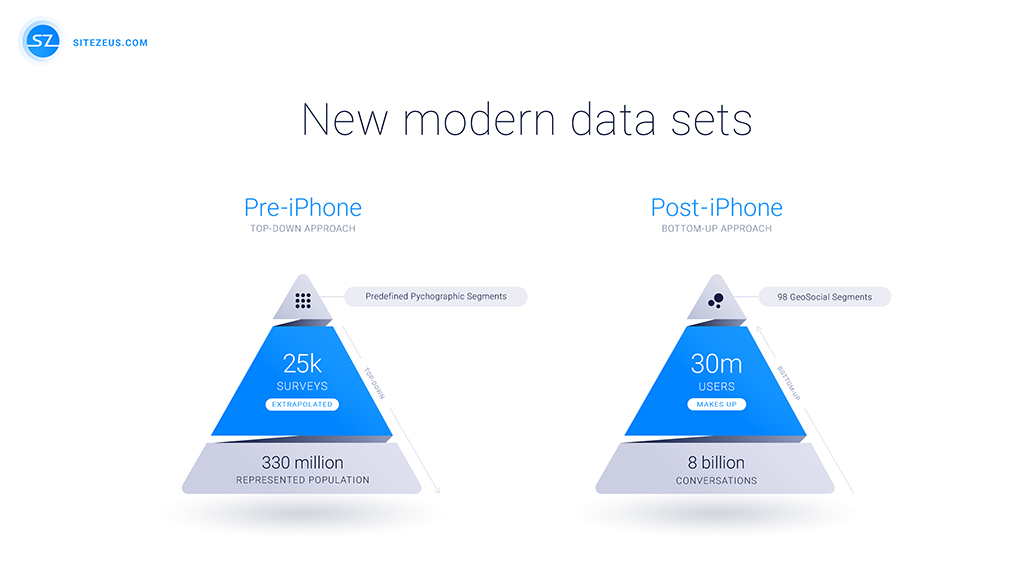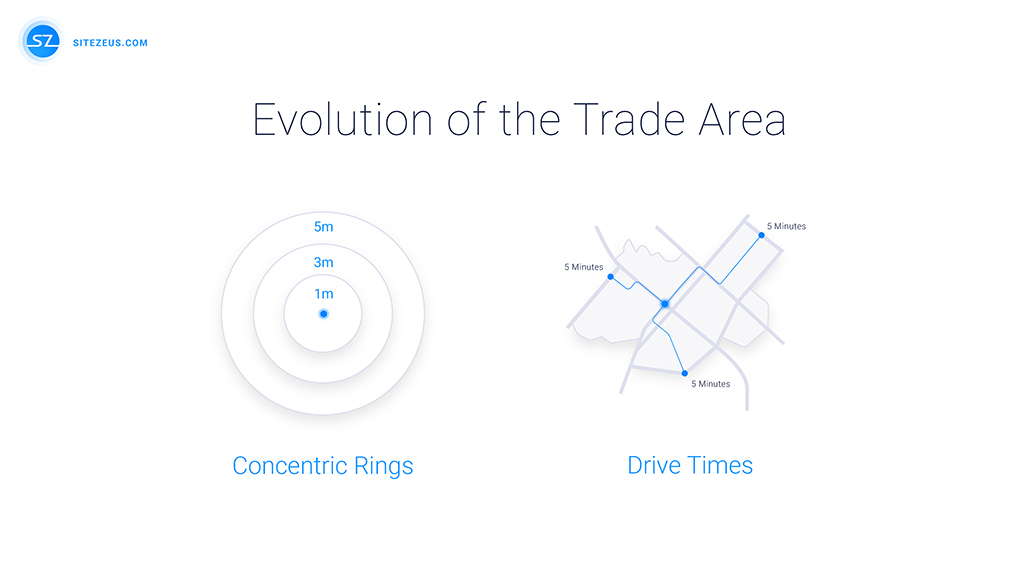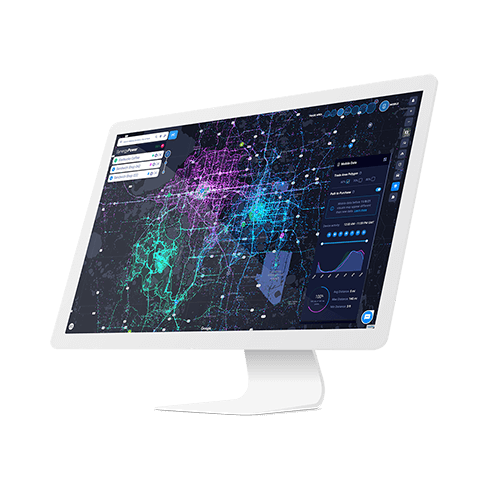Retail revolution – how modern data sets are changing the landscape
Site selection strategy is becoming more advanced. Data is easier to collect and analyze, and expansion can be determined in minutes instead of months. In fact, this BBQ chain is expanding in a shifting marketplace because of how they’re harnessing modern data sets.

Not everyone is enjoying this kind of success. Retailers like Payless ShoeSource, Quiznos, and Victoria’s Secret are cutting back. What’s the difference between the winners and losers? Location is a key factor. Demographics shift, competitors move in, and fads fade.
Successful brands are trading traditional site selection methods for real-time data feeds that pinpoint profitable growth areas. Using artificial intelligence (A.I.) and machine learning, modern site selection technology helps brands see customer behavior andidentify profitable trade areas for new locations in just a few clicks.
Outdated vs. modern site selection methodologies
Traditional psychographic and trade area analysis make assumptions that can hinder expansion success. Let’s explore these limitations.
Getting to know customers
PSYCHOGRAPHICS VS. REAL-TIME DATA
Outdated method: basic psychographics
To understand psychological characteristics (i.e. opinions, tastes, beliefs) of target customers, brands use vendors like Claritas PRIZM data and Personix. The drawback to this strategy is threefold:
- The data isn’t delivered in real time
- Categorization is limited to basic, predefined buckets
- Survey sample sizes are too small
This format limits variables to population density, income, and education. This isn’t helpful if you’re looking for something more specific—like the number of people talking about craft beer in a specific geographic area.
Beyond pigeonholing people into broad buckets that won’t help you predict interest in your brand, conclusions are based on feedback from a just 25,000 of 330 million people in the U.S. That’s less than 1% of the population. Your brand doesn’t have to settle for this.
Modern approach: dynamic geosocial data
Psychographics use a top-down approach to predictive analysis, where feedback from less than 1% of a population is used to make assumptions about the population at large. Conversely, geosocial data employs a bottom-up approach using 8 billion conversations to drive decisions.

The geosocial approach is automatic and evergreen. The solution uses A.I. and machine learning to analyze, collect, and categorize social conversations in an unbiased way.
Unlike traditional Census surveys, geosocial data isn’t limited to 4-5 variables determined decades ago. Categories grow as population preferences shift. Retailers can harness this raw data to see how customers behave or feel just before/after making a purchase.
Finding trade areas
EDUCATED GUESSING VS. PRECISELY CALCULATING
We know a trade area is simply a geographic area within which a company draws most of its business. How you identify and determine viability of those areas can make or break your business. Let’s explore traditional versus modern approaches.
Outdated method: going in circles
Simply drawing concentric circles around a potential site and then looking at a 1, 3, or 5-mile radius predates the internet. Just because someone travels into a trade area doesn’t mean they have any interest in buying your products or services. However, this is the methodology being used by the U.S. Census Bureau and Pitney Bowes. Step into the digital age and discover the power of mobile geofencing.

Modern approach: mobile geofencing
Instead of combining census data from years ago with assumptions that anyone in a 5-mile radius of your location could be a potential customer, mobile geofencing technology uses GPS to track the movements of anyone entering you trade area in real time.
Mobile geofencing helps retailers
- Understand true trade areas – Maximize sales in a region without taking away from other store sales.
- Analyze expansion impact – Easily see the sales impact of opening another location near an existing location.
- See the path to purchase – Use mobile data movement to anticipate consumer needs and streamline the buyer’s journey.
- Improve outdoor advertising ROI – Instead of purchasing space in a high-traffic area and hoping for the best, use geofencing to buy ad space where you know your potential customers go.
- Visualize traffic flow – INRIX traffic data can help brands see how much traffic flows through a region at a granular level—day of the week, time of day, etc.
Mobile geofencing in action
The competitive differentiator in retail revolution
Consumer behavior is rapidly evolving and successful brands like Walmart and Amazon are adapting by building retail-for-e-commerce options, enabling customers to order items online and collect them at a convenient, curbside pickup. To stay relevant, competing retailers are scrambling to add this service.
This begs the question: Do you want to struggle or set the pace?
The difference between companies thriving or receding in the retail space is data. Those proactively accessing and harnessing relevant, contextual data are out-positioning their competitors. Instead of waiting for trends to affect numbers, they actively assess and prepare for market shifts.
Predict consumer trends
A.I. platforms are now able to ingest more data than ever and help brands derive insights to select more profitable locations. There are two tools that are changing the game for brick-and-mortar brands:
- UberMedia – This mobile geofencing tool lets you see how populations move before, during, and after entering your trade area.
- Spatial.ai – Serving up geosocial data in 98 unique segments across 8 billion online conversations, this tool equips retailers to see what their ideal customers talk about.
Plugging in these tools, modern software solutions like the SiteZeus location intelligence platform can help retailers access,compile, and contextualize modern data sets in just minutes.
Go to market confidently
Retail success is a moving target because consumer preferences are constantly changing. A.I powered platforms like SiteZeus empower brands to better analyze retail performance with modern data sets. This innovative solution evolves with the market, adding new features and data partners that help small and medium brands compete head-to-head with big-box retailers. Sign up for a SiteZeus demo now!
Recommended Posts

